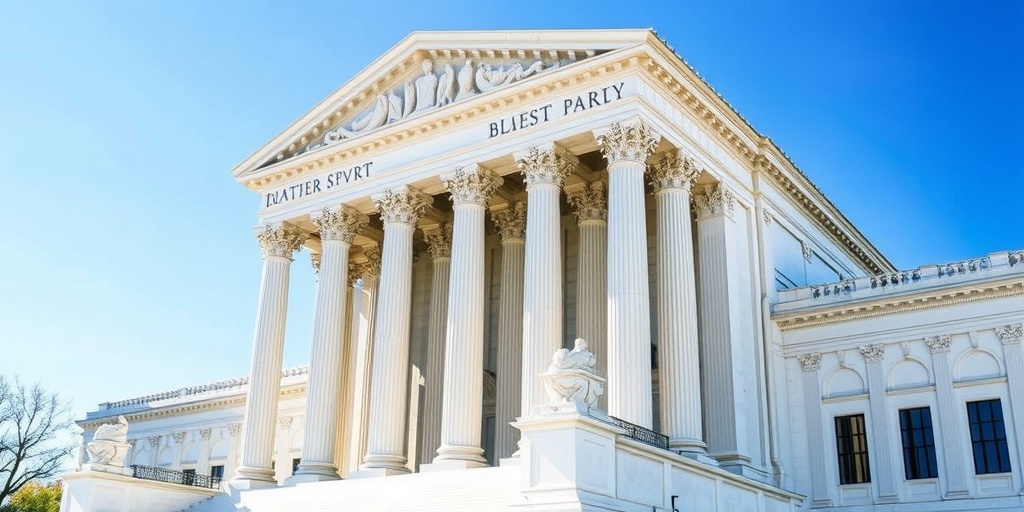Now Reading: Medicaid Cuts Proposed: Impact on Healthcare Access
-
01
Medicaid Cuts Proposed: Impact on Healthcare Access
Medicaid Cuts Proposed: Impact on Healthcare Access

Title: Republicans Propose Significant Cuts to Medicaid Budget Amidst Economic Challenges
By Margot Sanger-Katz
In a bold move, Republican leaders in Congress have instructed the committee responsible for overseeing Medicaid to reduce the federal program’s budget by a staggering $880 billion for the upcoming fiscal period. While the party claims that these cuts may not directly target Medicaid—designed to provide health coverage to 72 million low-income Americans—the enormity of this amount raises serious concerns about the potential fallout. Cuts could also arise from other health programs, such as Medicare, a staple service that former President Donald Trump has vowed to protect, making it difficult to offset the recommended reductions elsewhere.
As this process unfolds, the Republican agenda regarding Medicaid remains in its infancy, which has led to significant speculation about how exactly these proposed changes will materialize. A large fraction of Medicaid funding is allocated to states, which means that any cuts will primarily impact state budgets. Lawmakers at the state level could respond in several ways. They might opt to reduce coverage options for patients, raise taxes to compensate for the lost federal funding, or implement cuts in other areas of their budgets, such as education or public safety. The implications of such decisions could be profound and widespread.
Several potential scenarios could arise from this decision. One option is that states could choose to eliminate optional benefits or coverage for certain populations altogether. For example, many states expanded their Medicaid programs under the Affordable Care Act (ACA) in 2014 to include low-income adults, significantly increasing access to healthcare for numerous individuals. However, if federal funding decreases, these states might be faced with automatic cuts to this group, despite their previous commitments to improve healthcare access.
Additionally, there is growing interest among Republicans to instate work requirements for those currently benefiting from Medicaid. Though there is substantial public support for this proposition, it is estimated that enforcing such a requirement would yield a mere $100 billion in savings—far short of the targeted $880 billion cut. As it stands, mandatory spending in Medicaid is intricately structured, outlining what states must and must not cover, thus limiting lawmakers’ ability to enact sweeping changes through budget revisions alone.
It is important to recognize that the stakes extend beyond just the budget. States, which are already facing significant fiscal pressure, may find themselves with even narrower pathways to cover the ever-growing costs associated with Medicaid. Policies such as decreasing reimbursements for healthcare providers exacerbate the issue further. When states like Mississippi reduce their payments for services like echocardiograms, for instance, they risk driving away doctors willing to treat Medicaid patients, who often already struggle to access care due to low provider reimbursement rates.
The fallout will not only impact healthcare availability but could also translate into dire economic consequences for other sectors. If a sizable number of healthcare providers opt out of treating Medicaid patients, rural hospitals and nursing homes may be left vulnerable, with some potentially facing closure if they cannot balance the books without adequate state funding.
Despite the myriad methods states can adopt to reconcile their budgets, including increasing taxes, cutting funding from higher education, and slashing services, the implications of these proposals on Medicaid coverage are dire. While Republicans in Congress can claim they are not directly cutting Medicaid benefits or eligibility, the reality is that the shortfalls will inevitably lead to painful decisions at the state level—derived from a lack of necessary funding to maintain services.
The message from Congress appears to be that states must adapt on their own if they want to continue providing essential healthcare to their populations. This stance is rooted in the belief that the federal government should not be solely responsible for Medicaid expenditures. Historically, the partnership between the states and the federal government surrounding Medicaid funding has eroded, with federal contributions becoming less reliable due to various accounting practices that have shifted more of the financial responsibility onto local governments.
As Republican lawmakers work to cut funding in the face of public discontent over federal spending, the public backlash against potential Medicaid cuts remains significant. Polling shows that a considerable portion of Americans either directly benefit from Medicaid or have a family member who does, leading just 17 percent of people to favor budget cuts to the program. Faced with the possibility of higher taxes or reduced educational funding, local lawmakers may find it politically untenable to justify sacrificing Medicaid.
The repercussions of these discussions echo those from 2017, where a concerted effort to cut Medicaid funding was met with fierce grassroots opposition, not only from advocacy groups but notably from several Republican governors who voiced concerns over the impact on their states’ budgets. This resistance not only shaped public opinion but also influenced the political landscape, ultimately playing a role in the Democrats regaining control of the House of Representatives shortly afterward.
As discussions continue and details of these proposed cuts evolve, the ramifications of such actions on the future of healthcare funding and access in the United States will undoubtedly become more pronounced. This continuing narrative is poised to reshape the American healthcare landscape, impacting millions who depend on these critical services.
Stay Informed With the Latest & Most Important News
Previous Post
Next Post
-
 01New technology breakthrough has everyone talking right now
01New technology breakthrough has everyone talking right now -
 02Unbelievable life hack everyone needs to try today
02Unbelievable life hack everyone needs to try today -
 03Fascinating discovery found buried deep beneath the ocean
03Fascinating discovery found buried deep beneath the ocean -
 04Man invents genius device that solves everyday problems
04Man invents genius device that solves everyday problems -
 05Shocking discovery that changes what we know forever
05Shocking discovery that changes what we know forever -
 06Internet goes wild over celebrity’s unexpected fashion choice
06Internet goes wild over celebrity’s unexpected fashion choice -
 07Rare animal sighting stuns scientists and wildlife lovers
07Rare animal sighting stuns scientists and wildlife lovers




















